No matter who (Click on the sermon title for a .pdf copy)
Acts 10:34-43
March 27, 2016
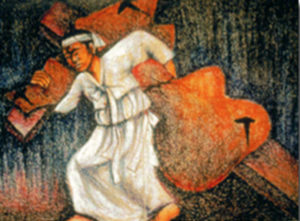 This is Jesus …
This is Jesus …
… a young Korean bearing the heavy burden of the cross and the heavy burden of his divided people.
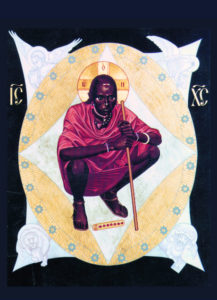
This is Jesus …
… a resolute Masai warrior watching over his brothers, protecting his sisters.
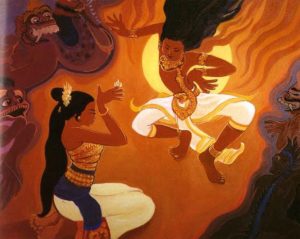 This is Jesus …
This is Jesus …
… a Balinese dancer, coming to us dancing, spreading light and joy, pushing back the shadows and all the beasts that lurk in the shadows.
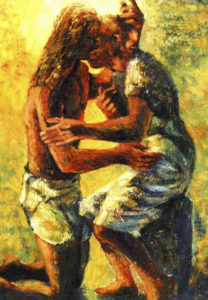
This is Jesus …
… drawing us close, drawing us into the comfort and grace and peace of his intimate embrace.
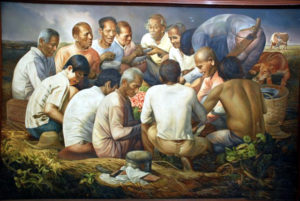 This is Jesus …
This is Jesus …
… among his own, one among this wonderfully diverse, wonderfully particular, wonderfully real group of Filipino men, sharing a feast.
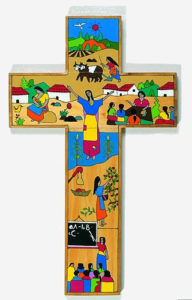
This is Jesus …
…embodied in the compassionate self-giving of a Salvadoran woman, embodied in the ones to whom she showed mercy.
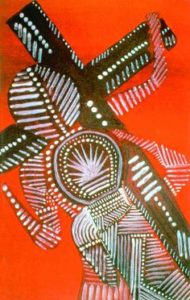
This is Jesus …
… sharing the weight of the cross with Simon, sharing his common lot, sharing our common lot, birthing in him and in us the dawn of new life.
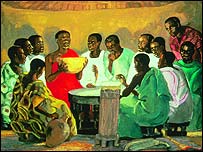
This is Jesus …
… a Mafa servant king offering his friends a bowl of living water, a bowl filled with glorious light.
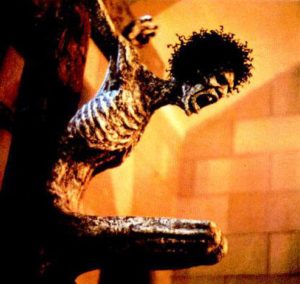
This is Jesus …
… a Brazilian torture victim, crying out with us, crying out for us, dying with us, dying for us.
Which one is the real Jesus? All of them.
In Jesus Christ, the man of Nazareth, you have come to us and shared our common lot.
In Jesus, God has come to us, to all of us. As Pope Francis affirms in his Evangelii Gaudium:
Christianity does not have simply one cultural expression, but rather, “remaining completely true to itself, with unswerving fidelity to the proclamation of the Gospel and the tradition of the Church, it will also reflect the different faces of the cultures and peoples in which it is received and takes root …” “Every culture offers positive values and forms which can enrich the way the Gospel is preached, understood and lived.”
Every culture can enrich our understanding of Jesus. We will come to know a bigger Jesus, a fuller Jesus, a truer Jesus as we acknowledge the ways he appears to others, and as we see him through their eyes and hear him speak to us through their voices.
That’s exactly what happened to Peter. He was Jesus’ disciple. He was Jesus’ friend. He was a witness to everything Jesus said and did in Galilee and Samaria and Jerusalem. He was a witness to Jesus’ arrest and conviction and execution, and he was a witness, a face-to-face, eating and drinking, touching and breathing witness to the Jesus God raised from death.
But he had something new to learn about Jesus! Peter had something new to learn about the gospel.
I now realize that it is true that God treats everyone on the same basis. Those who fear him and do what is right are acceptable to him, no matter what race they belong to.
No matter what. No matter who. No matter who you are.
This is the Good News of peace, the Good News of peace proclaimed by God through Jesus Christ, who is Lord of all. The good news is that Jesus is Lord of all, that Jesus doesn’t belong to some of us, but to all of us, and that through him, God brings peace … to all.
Through faith in Jesus, our sins are forgiven, and our sins are precisely those things that estrange us from God and from each other. Jesus bridges the gaps. Jesus tears down the walls. Jesus destroys not our enemies, but our enmity. Jesus gives us back to God again, which is where we belong, and Jesus brings us back together again, which is where we belong.
In Jesus Christ, the man of Nazareth, our crucified and risen Savior, you have come to us and shared our common lot, conquering sin and death and reconciling the world to yourself.
The last image in our Lenten series shows it best. This image, entitled “Golgotha” was painted in 1963 by Gebre Kristos Desta, an Ethiopian painter and poet.
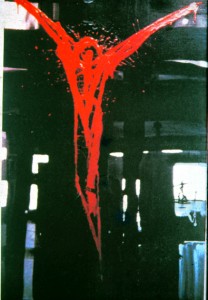 What do you see?
What do you see?
You see Jesus. You know it’s Jesus, even without the title, arms outstretched, being crucified.
You see him, this crucified human figure, hanging suspended against a dark background. The background is not natural or pastoral or pleasant, but stark and dark and angular, seemingly urban.
It’s the world, isn’t it? Not the world God has made, but the world we have made, the world that kills Jesus, and us, the world Jesus dies to save.
He hangs there, clearly a human figure, but not an identifiable human figure. He has no face, no distinguishing features, no skin, no skin color. He is just red, all red, all blood red, all red like blood.
The story is told of the genesis of this painting that as Gebre Kristos was teaching an art class one day at Addis Ababa University, two students were arguing about Jesus’ skin color. One student had painted the portrait of a black Jesus and was insisting that Jesus was black, while another student argued just as adamantly that Jesus was white.
Gebre Kristos heard their argument, but said nothing in response, one way or the other. Instead he went home and made this painting in one night, bringing it with him to class the next day. “This is Jesus,” he said. “He is neither Black, nor White or anything in between. He is Pure Blood.”
He is pure blood. Blood that sustains the life of every human being. Blood that is the life of every human being. Blood that runs the same color in every human being, no matter who. He belongs to all of us. He is all of us.
And his blood is spattered, splattered, spilled. This is a horrifying image, a violent image, an image that speaks of the violence done to Jesus, that speaks of the violence done to humanity, that speaks of the violence done to our humanity. What kind of creatures are we that could do this to Jesus? What kind of creatures are we that could do this to each other?
But look, again. Look at the particular shade of red painted by the artist. It is bright, vibrant … alive. Does the figure in the painting look dead or alive? Dying, fading away, flaming out, or full of energy and vitality and power?
Jesus’ death is life. There is power in the blood! This is a death that changes the meaning of death. This is a fearful dying that takes the fear out of dying. This is a death that shatters the walls that divide us, and a death that removes the boundaries that separate the dead from the living. This is a death that brings life and peace, by the power of God, to Jesus and to us.
Desta’s painting brings Good Friday and Easter together, because Good Friday and Easter belong together. Good Friday is Easter, because it is by the sacrificial death of Jesus that the power of sin and death to hurt is broken. And Easter is Good Friday. The risen Jesus still bears the marks of nails and spear. Our risen Lord is the Lamb who was killed. It is the Lamb who was killed who is worthy: “worthy to receive power, wealth, wisdom, and strength, honor, glory, and praise!”
Easter is not about escape, not about leaving this world and all its sorrows and horrors behind. Easter is about transformation, about changing sorrow into joy, changing horror into delight, changing enemies into friends, changing strife into peace, changing death into life.
Easter is about making all things new. Easter is about making you new …
